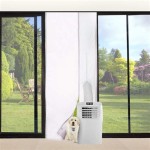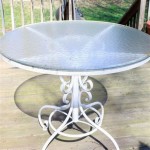Best Outdoor Electric Heaters For Patios
As the days grow shorter and temperatures dip, maintaining the usability of outdoor patios becomes a challenge. Electric patio heaters offer a practical and efficient solution for extending the outdoor season, providing warmth and comfort for gatherings and relaxation. These heaters offer a clean, convenient, and often more cost-effective alternative to propane or natural gas heaters, eliminating the need for fuel refills and minimizing emissions. Choosing the right electric patio heater involves considering factors such as heating capacity, mounting options, energy efficiency, safety features, and overall durability.
This article explores the various types of electric patio heaters available and discusses key considerations for selecting the best option for specific patio needs. It examines different heating technologies, power requirements, and features that contribute to optimal performance and user satisfaction. Understanding these factors is crucial for making an informed decision that aligns with individual heating requirements and patio layout.
Understanding Electric Patio Heater Technologies
Electric patio heaters employ several different technologies to generate heat. The most common types include infrared radiant heaters, quartz heaters, and halogen heaters. Each technology offers distinct advantages and disadvantages in terms of heating range, energy efficiency, and light output.
Infrared radiant heaters are widely regarded for their efficiency in directly heating objects and people within their range. They emit infrared radiation, which is absorbed by surfaces rather than heating the air in between. This makes them particularly effective in outdoor environments where wind can dissipate warm air. Infrared heaters are available in various wattages, allowing users to select a model that matches their specific heating needs. Some infrared heaters utilize carbon fiber heating elements known for their long lifespan and consistent heat output.
Quartz heaters also utilize infrared technology but typically employ quartz tubes as the heating element. These heaters provide rapid heating and are generally more affordable than carbon infrared models. However, they may have a shorter lifespan and can emit a brighter light. Quartz heaters are suitable for smaller patios or areas where instant heat is desired.
Halogen heaters represent another type of infrared heater, utilizing halogen lamps to generate heat. They produce a significant amount of heat and light, making them suitable for larger patios or open spaces. However, halogen heaters tend to be less energy-efficient than infrared models and have a shorter lifespan. The bright light emitted by halogen heaters may also be a consideration for some users.
Convection heaters are less common for outdoor use but represent another possible type of electric patio heater. Convection heaters warm the air around them, which then rises and circulates, heating the surrounding space. These heaters are less effective in windy conditions due to the rapid dissipation of warm air. They typically consume more energy than radiant heaters, making them a less practical choice for outdoor patios.
Key Factors to Consider When Choosing an Electric Patio Heater
Selecting the ideal electric patio heater requires careful consideration of several key factors. These include the size and layout of the patio, the desired heating range, the available power supply, and safety features. Evaluating these aspects ensures selection of a heater that effectively meets individual heating needs while prioritizing safety and efficiency.
The size and layout of the patio directly influence the required heating capacity. Larger patios require heaters with higher wattage to effectively warm the space. Similarly, open layouts may require multiple heaters or a single high-output model to compensate for heat loss. Understanding the patio's dimensions and considering any potential obstructions, such as walls or furniture, is crucial for determining the appropriate heating coverage. Manufacturers typically specify the heating area for their products, providing a useful guideline for selection.
Available power supply is another critical factor. Electric patio heaters require a dedicated electrical circuit to operate safely and efficiently. The wattage of the heater determines the amperage required, and it is essential to ensure that the existing electrical system can handle the load. Overloading a circuit can lead to blown fuses or even electrical fires. Consulting with a qualified electrician is recommended if there is uncertainty about the electrical capacity of the patio area. Many heaters operate on standard 120V circuits, while others require 240V circuits, which may necessitate professional installation.
Mounting options play a significant role in both functionality and aesthetics. Electric patio heaters are available in various mounting styles, including wall-mounted, ceiling-mounted, freestanding, and tabletop models. Wall-mounted and ceiling-mounted heaters offer a space-saving solution that can be discreetly integrated into the patio design. Freestanding heaters provide portability and flexibility, allowing them to be easily moved to different areas of the patio. Tabletop heaters are suitable for smaller spaces and provide localized warmth for dining or conversation areas. The choice of mounting style depends on the patio layout, personal preferences, and desired level of portability.
Safety features are paramount when selecting an electric patio heater. Look for models with safety certifications, such as UL or ETL listings, which indicate that the heater has been tested and meets safety standards. Overheat protection is an essential feature that automatically shuts off the heater if it overheats, preventing potential fire hazards. Tip-over protection is also important for freestanding heaters, as it automatically deactivates the heater if it is accidentally knocked over. Some heaters also include cool-touch housings to prevent accidental burns. Ensure the heater is suitable for outdoor use and is weatherproof to withstand exposure to rain and other elements.
Types of Electric Patio Heaters and Their Applications
The selection of the most suitable electric patio heater also involves understanding the different types available and their specific applications. Wall-mounted heaters, freestanding heaters, and tabletop heaters each offer distinct advantages in terms of space utilization, portability, and heating coverage.
Wall-mounted electric patio heaters are a popular choice for fixed outdoor spaces. They are typically installed on walls or under awnings, providing a permanent heating solution. Wall-mounted heaters offer several benefits, including space-saving design, easy installation, and consistent heat output. They are ideal for patios where a fixed heating source is desired and where floor space is limited. Wall-mounted heaters can be positioned to direct heat towards specific areas, such as seating areas or dining tables. Some models feature adjustable angles to customize the heating direction. The installation of wall-mounted heaters may require professional assistance, depending on the complexity of the wiring and mounting process.
Freestanding electric patio heaters offer a greater degree of flexibility and portability. These heaters are mounted on a base and can be easily moved to different locations on the patio. Freestanding heaters are suitable for patios where the heating needs vary or where a permanent heating solution is not desired. They are particularly useful for entertaining guests or for adjusting the heating zone as needed. Some freestanding heaters feature adjustable height settings, allowing users to customize the heating range. The portability of freestanding heaters also makes them easy to store during the off-season. Ensure the base is stable and heavy enough to prevent accidental tip-overs, especially in windy conditions.
Tabletop electric patio heaters are a compact and convenient option for smaller outdoor spaces. These heaters are designed to be placed on tables or countertops, providing localized warmth for individuals seated nearby. Tabletop heaters are ideal for outdoor dining areas, balconies, or smaller patios where a larger heater would be impractical. They are typically lightweight and easy to move, allowing users to position them as needed. Tabletop heaters often feature adjustable heat settings to control the level of warmth. While tabletop heaters provide localized heat, they may not be sufficient to warm an entire patio area. They are best suited for providing comfort to individuals in close proximity to the heater.
In conclusion, selecting the best outdoor electric heater for a patio requires a multifaceted approach, considering factors such as heating needs, patio size and layout, power requirements, and safety features. By carefully evaluating these aspects and understanding the different types of heaters available, individuals can choose a model that effectively extends their outdoor season and enhances the enjoyment of their patio.

The 5 Best Outdoor Patio Heaters Of 2025 Reviews By Wirecutter

The 5 Best Outdoor Patio Heaters Of 2025 Reviews By Wirecutter

Best Patio Heaters 2025 Tried And Tested For All Gardens The Independent

The 5 Best Outdoor Patio Heaters Of 2025 Reviews By Wirecutter

The 5 Best Outdoor Patio Heaters Of 2025 Reviews By Wirecutter

How To Choose A Patio Heater Outdoor Heating Options

The Best Electric Outdoor Heaters That Keep You Cosy

Commercial Outdoor Electric Heaters Wall Mounted Natural Gas Heater Heatstrip

Best Patio Heaters 2024 Garden Outdoor To Keep You Warm At Night Hello

Outdoor Heaters Herschel S Guide To Patio








